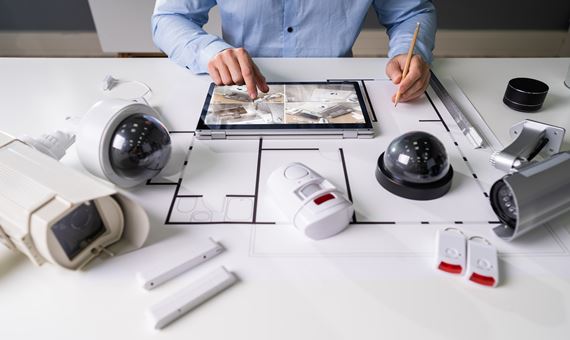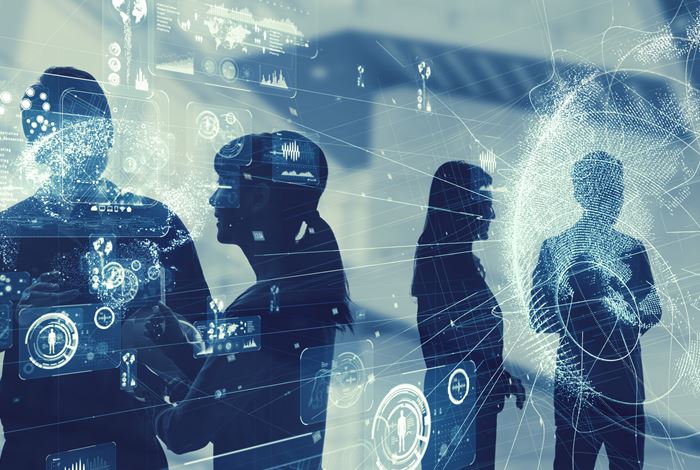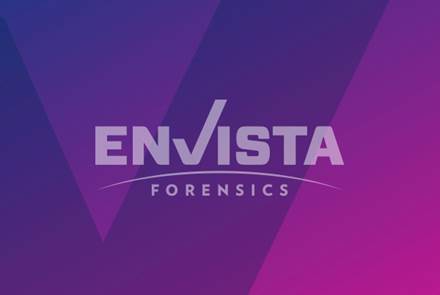Forensic Video Recovery Services
At the heart of digital forensics is the ability to recover data in a way that protects the original evidence. Today, video evidence is captured and contained on various devices, including digital video recorders (DVRs), mobile phones, personal cameras, home security systems, and body-worn cameras.
From private homes and vehicles to commercial businesses and government facilities, the use of video surveillance has never been more commonplace. The chances that an event critical to an investigation will be caught on video have increased exponentially. To have the highest opportunity for success, digital video footage must be collected and protected according to digital forensics best practices and industry standards.
Forensic Video Recovery Experts
Our experts have extensive experience, including expert testimony, regarding collecting, preserving, and analyzing digital video evidence. Even when a DVR unit looked to be damaged beyond repair through fire or water damage, we have successfully recovered the digital video.
Due to our comprehensive knowledge of forensic video data recovery processes and our specialized digital forensics expertise, our team has recovered video data in cases when others have failed.
Collecting and Protecting Digital Video Evidence
The digital video should be acquired and preserved based on the source of the video footage and how it originated. Collecting data from a digital video recorder is different than collecting video from the cloud or a mobile phone.
Digital Video Recorders
A digital video recorder (DVR) is a physical unit installed in a location that records video footage onto a hard drive contained inside the device. It is common for a DVR to record video footage for a certain amount of time and then begin overwriting itself with new video footage. Although digital forensics is heavily focused on data recovery, the overwriting of data with new data does, in fact, constitute true deletion.
Further, how the video is exported from the device is of paramount importance. If the video evidence is not exported in the most viable format and preserved correctly, or if the examiner does not perform the forensic examination properly, the evidence can be jeopardized. For example, if the video footage is exported in a low-quality format, and then the DVR overwrites the video footage of interest, the best evidence, high-quality video, can no longer be obtained.
An examiner performing forensic video recovery needs to thoroughly document their examination process so that another expert can duplicate the results. Without this documentation, it would be complicated, inefficient, or even impossible for another examiner to replicate the results, which would call the veracity of the evidence into question. Lack of proper documentation leaves evidence vulnerable to claims of spoliation, intentional, or unintentional, due to ineptitude.
To protect DVR evidence, our process includes:
- Creating a forensic image (which is simply a copy) of the hard drive inside the DVR to preserve the original evidence
- Cloning the data from the forensic image onto a new hard drive to use as a working copy
- Using forensic hardware and software, recovering and exporting the video footage from the copy in the highest possible quality available
- Documenting the process extensively to demonstrate that our examination produced the best evidence
Body-Worn Cameras
The video footage from body-worn cameras is contained in cloud-based applications and storage or at a physical location on a server or computer. In either instance, the video footage from these devices is usually contained inside proprietary software.
The benefit of these proprietary applications is that they usually have an audit log that cannot be modified or changed. However, it can be difficult to gain access to the video and these audit logs.
Having an understanding and familiarity with these systems is extremely beneficial during an examination. Our team of experts has first-hand knowledge of these devices and systems from wearing them while serving in law enforcement prior to joining Envista and/or through direct analysis and data acquisition while working on various cases.
Smart Home Surveillance Systems
Integrating smart home surveillance systems that connect to the cloud (remote storage) has revolutionized the consumer market for video surveillance systems. For a few hundred dollars or less, a home surveillance system can be installed by a layperson or homeowner in an afternoon. This video surveillance is usually of high definition quality with multiple recording cameras that can capture activity both at the home and on the street, the house next door, and more.
Further, since these are IoT devices, the video can exist and be collected from multiple locations, including a local computer, cell phone, or a cloud user account associated with the surveillance system. However, as with all forms of video surveillance, new or old, it is critical that the evidence be handled appropriately.
Depending on how the smart home surveillance system is installed and set up, it might only keep video footage for a short period of time before deleting it. When it becomes apparent that the recorded video could be of evidentiary value, it should be collected immediately by a qualified examiner. It also needs to be collected in a way that ensures the video is of the highest quality possible.
Video Forensics Enhancement and Analysis
Video evidence is becoming more prevalent in insurance claims, Special Investigations Units (SIU), and legal cases. However, the value of a video as evidence often depends on its quality and what can be clearly understood from it. That's where forensic video analysis becomes relevant, offering ways to make unclear or poor-quality videos more valuable for your work.
Video Enhancement
Some essential details might be missing or hard to see if you have video footage that's hard to interpret due to low resolution, poor lighting, or shaky camera work. Our experts can assist by enhancing the video by sharpening the footage, balancing colors, and reducing digital "noise." The aim is straightforward: to make the details in the footage more accessible and usable in litigation and investigations.
Often, essential information is hidden in brief moments within a video. We can isolate these moments for closer inspection by breaking down the footage frame-by-frame. Additionally, stabilization techniques are used to smooth out the footage if the original video is hard to follow because of shaky camera work. This helps make the video more comprehensible, which can be vital for the triers of fact.
Verifying Video and Photo Authenticity
In an era of accessible digital editing and generative AI, ensuring that a video or photo hasn't been altered is essential. Our authentication process includes a variety of methods, like examining the metadata, scrutinizing the pixel-level details, and matching hash values to verify a file's integrity. In other words, we can analyze video and photo evidence for signs of manipulation or tampering.
Identifying Manipulated Content
Advanced editing tools are making it increasingly easy to alter photos and videos. We apply specific criteria to detect signs of manipulation, such as irregularities in shadows and lighting, odd scaling of objects, or unnatural lines in an image. These signs are meticulously checked through specialized forensic software to ensure the evidence's authenticity.
Our video forensic analysis service offers a practical set of tools to enhance and authenticate your video and photo evidence. Whether you're working on an insurance claim, an SIU investigation, or a legal case, the objective is the same: to make your evidence as clear and reliable as possible.
Video Forensic Analysis: Case Examples
Video forensics is utilized in all types of cases, and is becoming more prevalent since just about everyone carries a high-definition camera in their pocket at all times, otherwise known as a cell phone. The usefulness of video forensics goes beyond enhancement. The analysis of video footage can help explain that actually happened. Here are some case examples to illustrate:
Phone Reflection in a Trucking Accident Case
In a motor carrier accident case, a video of the incident is captured by the forward-facing camera mounted inside the truck. The weather conditions are foggy, and the lighting from the streetlamps' lighting creates reflections that can be seen in the video. In particular, the truck driver's cell phone flashes can be seen against the inside windshield at three separate moments in the video. The plaintiff argues that the reflections show that the truck driver was looking at his phone, and therefore, that was the cause of the accident. The truck driver claims this is untrue, as the phone was in a mount and only used for navigation directions. By performing a forensic analysis of the video, a digital forensic examiner determined that the three instances of phone reflection against the inside of the windshield are all in the exact same spot, including when the truck is flipping on its side and sliding. The driver would have to be absolutely and perfectly still during the entire recording for this to occur, confirming the defense's argument that the phone was, in fact, in a mount and not being manipulated by the truck driver.
Identifying the Object in a Defendant's Hand
The government claims that the defendant brandished a gun and threatened the people surrounding him as they all exited a nightclub after the last call. When reviewing the video, an object is identified in the defendant's hand. However, after the video is forensically enhanced and examined, it is determined that the object is a cell phone and not a firearm, consistent with the defendant's story.
Assisting SIU (Special Investigation Unit) in an Arson Case
A fire occurs at a manufacturing facility, causing extensive property damage and business interruption. SIU is tasked with determining if the fire was the product of arson. SIU investigators identified a camera pointed at the incident location across the street and, with the help of a digital forensic examiner, extracted the video footage from the cloud storage location where it was housed. By examining the video, it is determined that the fire was the product of arson. In fact, it was determined that a disgruntled employee started the fire, which was discerned by enhancing the license plate on the vehicle used by the perpetrator.
Please visit our expert directory.

















